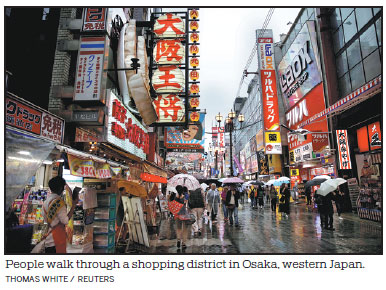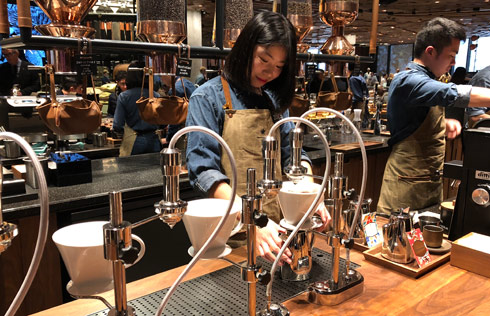Relaxed visa rules fuel tourist numbers in Osaka
OSAKA/TOKYO - Osaka, long Japan's "second city", is winning the race against Tokyo to draw foreign tourists, but its retailers and property developers are adapting to shifting tourism spending patterns.
Inbound tourism to Osaka surged fivefold between 2012 and 2017, faster than visits to Tokyo, as the city lured low-cost carriers and promoted itself as a base to visit the 25 World Heritage sites in nearby Kyoto and Nara.
Initially, developers and retailers scrambled to build new hotels, expand floor space, and install cashless payment systems like Alipay and WeChat to keep up with the sudden influx of big-spending tourists, mostly from China.
But tourism is entering a new phase now, where instead of loading up on luxury brands, visitors want to spend more on services like makeup consulting, maternity goods, and other cheaper items.
Businesses expect that to become the norm - and to provide a permanent boost to the economy of the Kansai region around Osaka as the city prepares to build a large casino resort.
"Osaka was running at full speed on tourism, but now we're moving to a more sustainable pace of growth," said Takeshi Yamaguchi, associate director of research at real estate consulting firm CBRE in Osaka.
"Compared to Tokyo, Osaka is positioned for longer and more sustainable growth in development and tourism because of things like the integrated resort," Yamaguchi added.
The city's compact layout and food culture have proved a hit with Asian tourists, and that has created new opportunities for startups, social media marketing consultants and foreign property developers.
Osaka and its surrounding cities may become the most visible example of how Prime Minister Shinzo Abe's economic policies have changed Japan.
Since Abe took office in late 2012, the government has relaxed visa requirements for China and other Southeast Asian countries. Foreign visitors to Osaka hit 11.1 million in 2017, a fivefold increase from 2012, making it Japan's fastest-growing inbound tourist destination, government data show.
By contrast, visits to Tokyo roughly tripled in the same period.
Foreign visitors to Osaka could reach 26 million per year by 2030, CBRE's Yamaguchi said.
"I've been to Osaka three times, and I like it better than Tokyo," Zhang Xinjie, 30, a software engineer from Shenzhen, Guangdong province, said at a shopping arcade in Osaka's bustling Shinsaibashi district. "I like the vibe, the history, and the shopping."
Reuters

(China Daily 03/13/2019 page7)


















